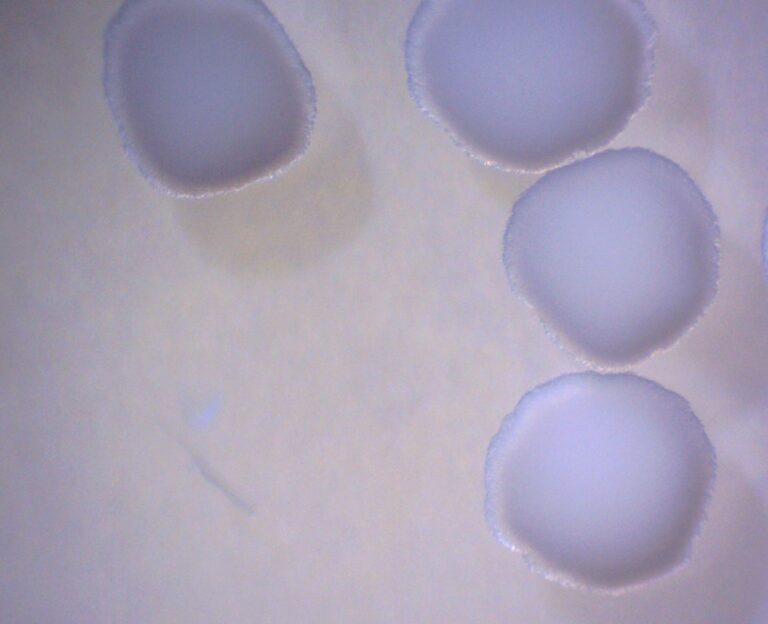Standardize 3D cell culture workflows from screening to plating
From oncology to toxicology, our AI-powered sorters bring precision and reproducibility to 3D cell culture—screening, sorting, and plating with consistency and care.

Bring clarity, consistency, and scale to 3D cell culture
Bionomous automates the most variable parts of 3D cell culture—standardizing how you select your 3D cell cultures for downstream assays.
Reduce variability, improve reproducibility
Standardize your selection criteria across experiments, users, and timepoints—ensuring reliable results in every assay.
Accelerate high-content screening
Handle hundreds to thousands of samples per run with precise classification based on size, shape, and marker expression.
Reduce hands-on time in 3D cell culture workflows
Replace manual sorting with intelligent automation—reducing handling errors and allowing scientists to focus on innovation.
Adapt the EggSorter for 3D cell culture-based research
Originally designed for small biological entities like fish embryos, the EggSorter also handles organoids and spheroids, automating how you screen, classify, and plate complex 3D cell structures.
Automate viability selection
Support standardized toxicology studies
Isolate fluorescently labeled organoids
Customize how the EggSorter identifies organoids
LabSwipe makes it easy to create your own sorting models using images from your experiments. Just label what counts as viable and the AI learns to recognize it, no coding or data science required.
Target what matters in your assays
Whether you’re looking for structural integrity, uniform size, or specific morphology, LabSwipe lets you define sorting logic around your priorities.
Refine accuracy with each run
Continue improving your model over time. LabSwipe supports iterative training—adjust as your research evolves without starting from scratch.
Train with your own image sets
You decide what viability looks like. Just label a few representative samples, and the AI learns your criteria automatically.

Trusted by leading
labs

Hear about our impact in labs like yours

At the Leibniz Institute on Aging – Fritz Lipmann Institute (FLI), we are using the EggSorter for sorting Nothobranchius furzeri wild type eggs onto plates containing coconut substrate. The EggSorter has proven to be a highly reliable and efficient tool in our workflow, significantly streamlining the egg-sorting process.
We are very satisfied with its performance. The system operates with very high precision and consistency, helping us to save time and standardize a previously labor-intensive step. The EggSorter fully meets our expectations and has become an indispensable part of our daily work with N. furzeri embryos

Our goal was to robotize the sorting of the fish eggs to improve our productivity. We acknowledge the perseverance of Bionomous to solve technical difficulties and successfully deliver the tool adapted to our specific needs. The eggsorter dedicated to Medaka fish eggs facilitates the work of our technicians.

The Bionomous EggSorter saves me valuable time in the laboratory while ensuring accurate and reliable results.
Thanks to its automation, I can focus on my experiments/other tasks without worrying about repetitive sorting tasks.
Read our FAQs
What sample sizes are supported?
The device works with entities sized 500 µm to 2 mm. To ensure consistent sorting, the batch should have a homogeneity of ±100 µm.
How fast is the system?
Processes up to 1 entity every 0.5 seconds (depending on mode, up to 5 sec/entity).
On average:
- 50 entities in a Petri dish → 2–3 minutes
- 96-well plate → 3–5 minutes
What screening modes are available?
Brightfield imaging (transmitted and reflected light)
Fluorescence screening with up to 6 filter cubes, including:
- BFP, GFP, YFP, tdTomato, mCherry A, mCherry C
(Full specifications available upon request.)
What is the dispensing volume?
The minimum dispensing dose is 50 µL per sample, with a precision of ±10%.
What output containers are supported?
The EggSorter is flexible and can dispense into:
- Falcon tubes (up to 2)
- Multiwell plates (6x to 96x wells, up to 4 plates)
- Petri dishes (up to 4 × 10 cm)
How is the system disinfected?
It can be cleaned with 70% ethanol or 5–10% bleach, ensuring safe and easy maintenance.
What are the device dimensions?
- 50 × 50 × 30 cm (L × W × H)
- Weight: ~18 kg